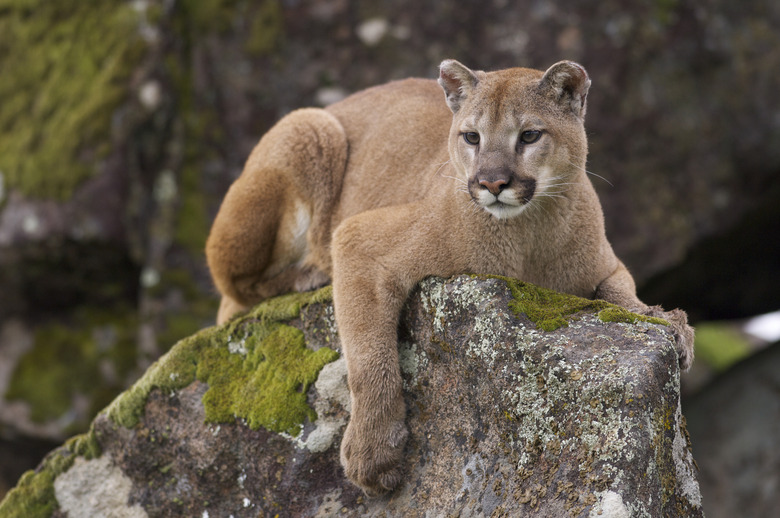How To ID Mountain Lion Poop
Exact identification of cougar scat usually requires lab analysis, but you can often make an educated guess by keying into certain characteristics, such as the shape, size and appearance of the scat. Mountain lions — also known as cougars, pumas or panthers — are famously elusive big cats native to the Americas. While glimpses of these magnificent carnivores are rare, the sharp-eyed nature enthusiast may be able to detect their presence through droppings and other signs like scratch marks.
Shape and Size
Shape and Size
Like that of many carnivores, cougar scat usually appears as a ropey, segmented cord or a cluster of dismantled chunks. The end of the cord or one of the loose segments often shows a "tail." Scat may be 5 to 9.5 inches long with a diameter of 1 inch or greater.
Other Characteristics
Other Characteristics
Cougar scat is commonly full of hair and fragments of bone, reflecting the cat's almost exclusively carnivorous diet. Sometimes you'll see a bit of grass, however. Depending on its components and age, the scat may be black, brown, or grayish white. Cat scat is often quite pungent smelling.
Scrapes
Scrapes
Look for scrape marks around or underneath the scat. Male cougars often mound dirt and debris and then urinate or defecate upon the pile — a signpost for other cats. Both male and female cougars may also paw dirt over their droppings. Keep in mind that canids will also scrape the ground in connection with defecating, though usually not so fastidiously.
Other Clues
Other Clues
Cougars, particularly males, often deposit scats in prominent spots such as rocks, logs, the centers of game trails, ridgelines and the like. Keep an eye out for nearby cougar tracks: They're four-toed; typically 4 inches wide and 3.5 inches long; and usually lack claw marks. Though large scat cords in developed areas have a good chance of being a dog's, remember that cougars — not restricted to remote wilderness — will sometimes wander suburban outskirts. You'll most likely encounter cougar sign in western North America and South Florida: The cats are absent from much of the Midwest, East and South, though increasingly they are reoccupying historic range.
Cite This Article
MLA
Shaw, Ethan. "How To ID Mountain Lion Poop" sciencing.com, https://www.sciencing.com/id-mountain-lion-poop-2155858/. 19 April 2018.
APA
Shaw, Ethan. (2018, April 19). How To ID Mountain Lion Poop. sciencing.com. Retrieved from https://www.sciencing.com/id-mountain-lion-poop-2155858/
Chicago
Shaw, Ethan. How To ID Mountain Lion Poop last modified March 24, 2022. https://www.sciencing.com/id-mountain-lion-poop-2155858/
